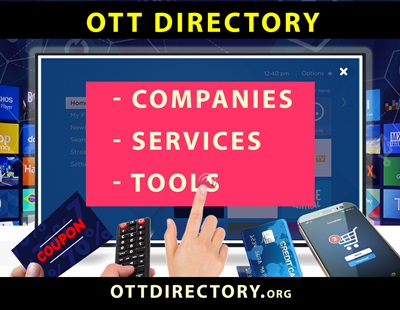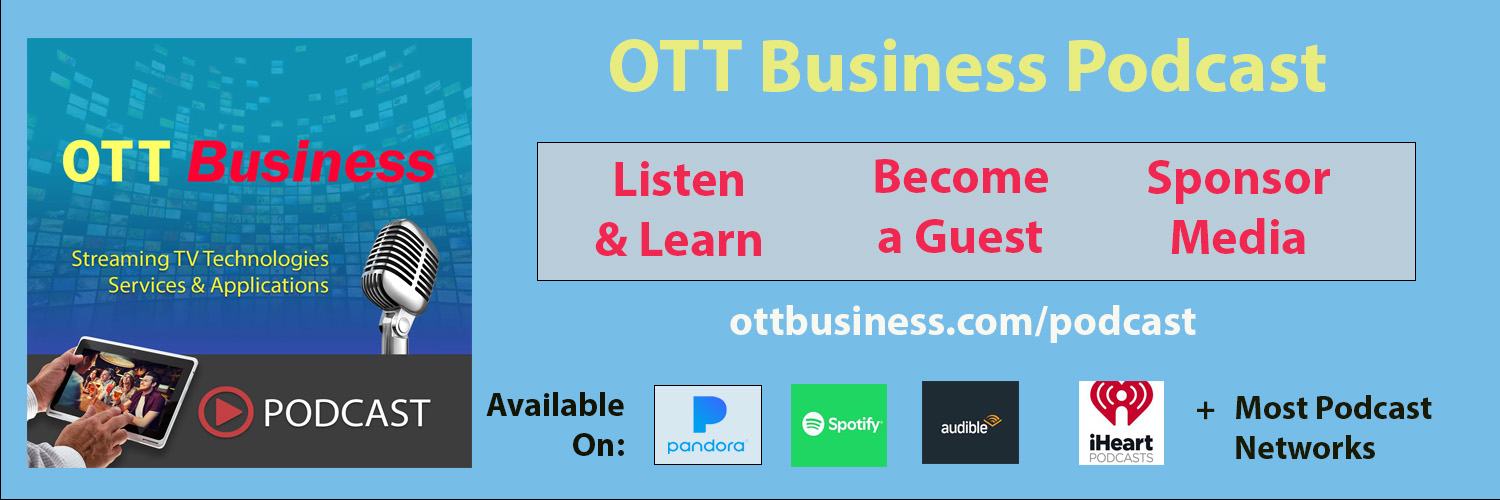Media workflow automation streamlines content creation to distribution processes by integrating and automatically performing project and task activities ensuring seamless operations and improved productivity. Media workflow automation for OTT solutions addresses the complex and fragmented processes in content production and distribution. By integrating adaptive AI, it optimizes workflows based on predictive analytics, reducing manual intervention and boosting efficiency. Key problems solved include lack of cohesive integration, compliance challenges, and repetitive manual tasks. Features such as robust analytics and reporting, cloud-based services, real-time monitoring, task automation, and seamless API capabilities streamline operations, improve productivity, and ensure regulatory compliance. Notifications, collaboration tools, and version control further enhance team synergy and project management. Discovering how these solutions transform media workflows can drive better content delivery and overall operational excellence.
Media Workflow Automation

Media Workflow Automation Systems and Tools List
Ace Workflow – Ace Workflow specializes in automating tedious processes for media companies, unifying SaaS stacks to free teams from manual tasks and improve efficiency.
Adobe Creative Cloud – Adobe Creative Cloud offers a suite of software for video editing, graphics, web development, and photography, enabling seamless cloud-based collaboration.
Amplifi.io – Amplifi.io is a media resource management software that optimizes digital asset distribution and marketing operations, ensuring content is on-brand and readily available.
Avid Technology – Avid Technology provides comprehensive media production solutions, including tools for video editing, asset management, and workflow automation.
Bitcentral – Bitcentral provides broadcast and digital media workflow solutions, focusing on news production, media asset management, and multiplatform distribution.
Camunda – Camunda delivers process automation solutions that enable media and entertainment companies to orchestrate complex workflows, enhancing agility and output.
CatDV (Quantum) – CatDV offers scalable media asset management solutions, catering to the needs of both small teams and large enterprises in organizing and managing media content.
ChyronHego – ChyronHego offers media distribution and content workflow solutions for OTT providers to manage and deliver live and on-demand video content.
Dalet – Dalet provides integrated solutions for media asset management, workflow orchestration, and multiplatform content distribution.
Evertz – Evertz offers a wide range of media and broadcast solutions, including advanced media asset management and workflow automation systems.
Grass Valley – Grass Valley offers comprehensive solutions for live production, media workflow, and content delivery, empowering media organizations to create and distribute high-quality content.
IMT – IMT provides media asset management solutions that unify creative workflows, optimizing access to media across business units and systems for seamless operations.
Jiffy – Jiffy.ai offers AI-powered automated media planning software and campaign management solutions, transforming media planning and advertising operations through automation.
Limecraft – Limecraft provides cloud-based media management solutions, focusing on workflow automation to enhance collaboration and efficiency in media production.
Primestream – Primestream provides advanced media asset management and automation solutions designed to streamline production workflows from acquisition to distribution.
Profuz Digital – Profuz Digital provides advanced content management and workflow optimization software to streamline media production, localization, and distribution processes.
qibb – qibb is an integration platform for media workflows, enabling the planning, building, and running of modular solutions with best-in-class integrations and pre-built workflows.
Ross Video – Ross Video delivers comprehensive playout solutions that combine automation, media asset management, and multi-platform delivery for broadcasters and OTT providers.
Salesforce Media Cloud – Salesforce Media Cloud provides a unified platform for media companies to automate and monetize media experiences, integrating various processes to boost productivity.
Square Box Systems – Square Box Systems provides CatDV, a leading media asset management software that helps organizations manage and automate media workflows.
Telestream – Video transcoding, streaming, and clipping solutions for broadcasting and online media industries.
Vizrt – Vizrt offers real-time 3D graphics, studio automation, and media asset management tools to enhance broadcast and media production workflows.
Workflowers – Workflowers specializes in media services, including consulting and training, helping companies organize better workflows and develop image processing plugins for digital cinema and post-production.
Workfront (Adobe) – Workfront by Adobe is a project management platform that helps creative teams manage tasks, collaborate, and streamline media production workflows.
Media Workflow Automation Systems Key Features and Capabilities
Adaptive AI
Adaptive AI incorporates smart technology to adjust and optimize workflows based on predictive analytics and historical data. This feature is crucial because it enhances decision-making by automatically fine-tuning processes, boosting efficiency, and minimizing manual intervention.
Analytics and Reporting
Robust analytics and reporting tools provide comprehensive data on workflow performance, including productivity metrics and bottlenecks. This is important as it helps teams track progress, measure the success of projects, and make data-driven adjustments to improve overall productivity.
API Capabilities
API capabilities allow the workflow automation platform to integrate seamlessly with third-party applications, enabling a more cohesive and interconnected system. This feature is essential as it ensures that all tools used in the workflow can communicate effectively, improving workflow efficiency and user experience.
Cloud-Based Services
Cloud-based services offer remote access and support for collaboration from any location, allowing teams to work together regardless of physical boundaries. This is significant as it promotes flexibility, facilitating seamless team interactions and real-time updates on tasks.
Collaboration Tools
Collaboration tools facilitate communication and joint work among team members by providing features such as shared workspaces and chat options. This is vital as it ensures that team members can easily share ideas, provide feedback, and work cohesively on projects, boosting overall productivity.
Compliance Management
Compliance management ensures that workflows adhere to industry standards and regulatory requirements. This feature is important because it minimizes the risk of non-compliance, which can lead to legal repercussions and operational delays.
Content Archiving
Content archiving provides an organized system for storing and retrieving completed projects. This is crucial for maintaining a library of past work that can be accessed for reference or repurposing, saving time and resources in future projects.
Media Formats
Media format support ensures that the platform can handle various types of media seamlessly, including video, audio, and graphics. This feature is essential for simplifying the process of managing content in different formats, enabling smoother workflow transitions from creation to distribution.
Notifications and Alerts
Automated notifications and alerts keep users informed about task status, project changes, and upcoming deadlines. This feature is important as it ensures timely responses to workflow developments, helping to maintain smooth operations and meet project deadlines.
Real-Time Monitoring
Real-time monitoring tools provide up-to-date tracking of workflow progress, allowing teams to view project status as it happens. This feature is essential because it helps identify and address potential issues quickly, ensuring that projects stay on schedule.
Resource Allocation
Resource allocation tools manage the distribution of resources and scheduling effectively within a project. This is important as it ensures that human and material resources are used optimally, preventing bottlenecks and enhancing project outcomes.
Support
Reliable customer support ensures smooth and uninterrupted platform performance by providing assistance when issues arise. This feature is crucial for minimizing downtime and addressing any technical problems that could disrupt workflow efficiency.
Systems Integration
Systems integration ensures compatibility with existing systems and tools, creating a cohesive work environment. This feature is important as it prevents workflow fragmentation, making processes more efficient by allowing seamless data exchange and task coordination.
Task Automation
Task automation enables the platform to handle repetitive tasks, reducing the manual workload for team members. This is vital as it frees up time for teams to focus on more strategic and creative aspects of projects, enhancing productivity and reducing human error.
Template Management
Template management provides pre-set workflow templates that can be used to set up new projects quickly. This feature is important because it speeds up the initiation process, ensuring that teams can start working with consistent, tried-and-tested frameworks.
Version Control
Version control ensures that a history of project versions is maintained, allowing easy access to previous iterations. This is crucial for teams needing to revert to earlier project stages or track changes, helping maintain consistency and reduce errors.
Workflow Customization
Workflow customization allows users to modify and tailor workflows to suit specific project needs. This is significant because it provides the flexibility to create processes that align with unique team structures, goals, and types of content, enhancing efficiency and satisfaction.
Media Workflow Automation Glossary
Artificial Intelligence (AI) – The simulation of human intelligence in machines that can perform tasks such as decision-making, data analysis, and automation.
Application Programming Interface (API) – A set of protocols and tools for building software and applications, enabling integration between different systems and services.
Automation Framework – A system or structure that supports the automation of repetitive tasks in media workflows, enhancing efficiency and consistency.
Bandwidth Management – The practice of optimizing and allocating network bandwidth to ensure efficient data transfer, preventing delays and bottlenecks in streaming and distribution.
Cloud Storage – A data storage model in which digital data is stored on remote servers accessible over the internet, allowing for scalable and secure data storage and retrieval.
Content Delivery Network (CDN) – A system of distributed servers that deliver content to users based on their geographic location, improving access speed and reliability.
Content Management System (CMS) – A software platform that enables users to create, manage, and modify content on a website or platform without needing specialized technical knowledge.
Digital Asset Management (DAM) – A system used to store, organize, manage, and retrieve digital assets such as videos, images, and documents efficiently.
Digital Rights Management (DRM) – Technologies and tools used to protect digital content from unauthorized use and piracy by controlling access and usage rights.
High Efficiency Video Coding (HEVC) – A video compression standard designed to improve video quality and reduce file size, also known as H.265.
Machine Learning (ML) – A subset of artificial intelligence focused on creating systems that can learn from data and make decisions with minimal human intervention.
Metadata – Data that provides information about other data, such as descriptions, tags, and properties, facilitating better organization and searchability.
Over-the-Top (OTT) – A media service that is delivered directly to viewers over the internet, bypassing traditional cable or satellite broadcasting.
Post-Production – The phase in media production after filming or recording where content is edited, color-corrected, and finalized for distribution.
Quality Control (QC) – The process of ensuring that media content meets specific quality standards before distribution.
Scalability – The capability of a system or platform to handle increased loads or expand functionality without compromising performance or efficiency.
Software as a Service (SaaS) – A software distribution model where applications are hosted by a service provider and made available to customers over the internet.
Transcoding – The process of converting a media file from one format or codec to another for compatibility or optimization.
User Experience (UX) – The overall experience and satisfaction a user has when interacting with a media workflow platform or service.
User Interface (UI) – The space where interactions between humans and computers occur, focusing on the design and functionality of the platform for an intuitive user experience.
Workflow Automation – The use of technology to automate complex business processes, reducing manual work and increasing efficiency in media production and distribution.

